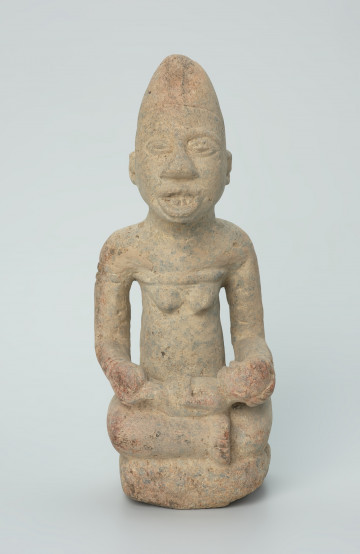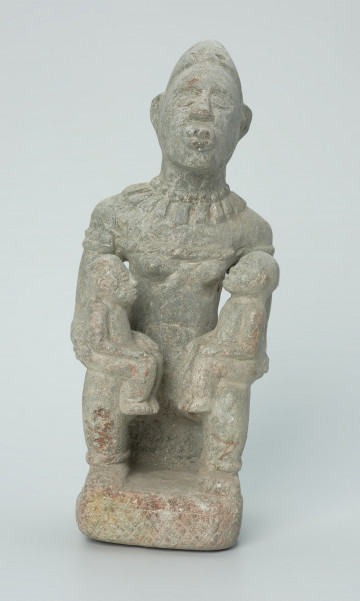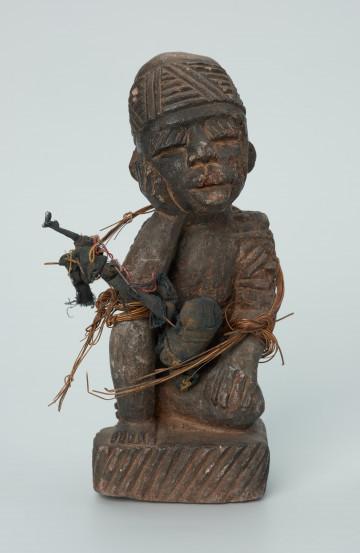
Ancestor worship figure
około 1901 — 2000
National Museum in Szczecin
Part of the collection: Mintadi figurines
The mintadi figurine was carved in graphite stone, and it most probably represents a man. The figure holds an unidentified cylindrical object in his hands. The thing is decorated with vertical incisions on the outside and finished with a round piece of transparent glass, symbolising the water surface and suggesting connection between the figure and the realm of ancestors. According to Bakongo mythology, water is considered the middle world, the space that separates the living world from the world of the dead. The figure was associated with ancestor worship. The word mintadi means guardians, custodians in the Kikongo language. It is believed that mintadi were used to decorate and protect the graves of rulers, royal dignitaries and their wives and mothers. According to oral tradition preached by the Bakongo, mintadi can move and act as intermediaries between the world of the living and the dead. They have not served magical purposes. Most mintadi are surrogates for a ruler still alive but temporarily absent and effigies of deceased chiefs to ensure continuity and permanence of power. Mintadi are believed to be an object that stores the life force of the deceased, which is released at the time of his death. The power of the deceased is placed in sculpture through funeral rites. It is used for the benefit of the community, the needs of the living, and those yet to be born. A sculpture is not an image of a real person. The symbolism of its elements and attributes is crucial. The head is the essential element of the statue. It symbolises the seat of a man's soul and thoughts. The emphasised abdomen, navel and sexual organs are treated as symbols of procreation, the connection of generations. Headgear, hairstyle, walking stick, scarification and ornaments are to indicate an individual, their position and social role.
Katarzyna Findlik-Gawron
Author / creator
Dimensions
cały obiekt: height: 18,4 cm, width: 7,6 cm
Object type
sculpture
Creation time / dating
Creation / finding place
Identification number
Location / status

około 1901 — 2000
National Museum in Szczecin

około 1901 — 2000
National Museum in Szczecin

około 1901 — 2000
National Museum in Szczecin
DISCOVER this TOPIC
Castle Museum in Łańcut
DISCOVER this PATH
Educational path